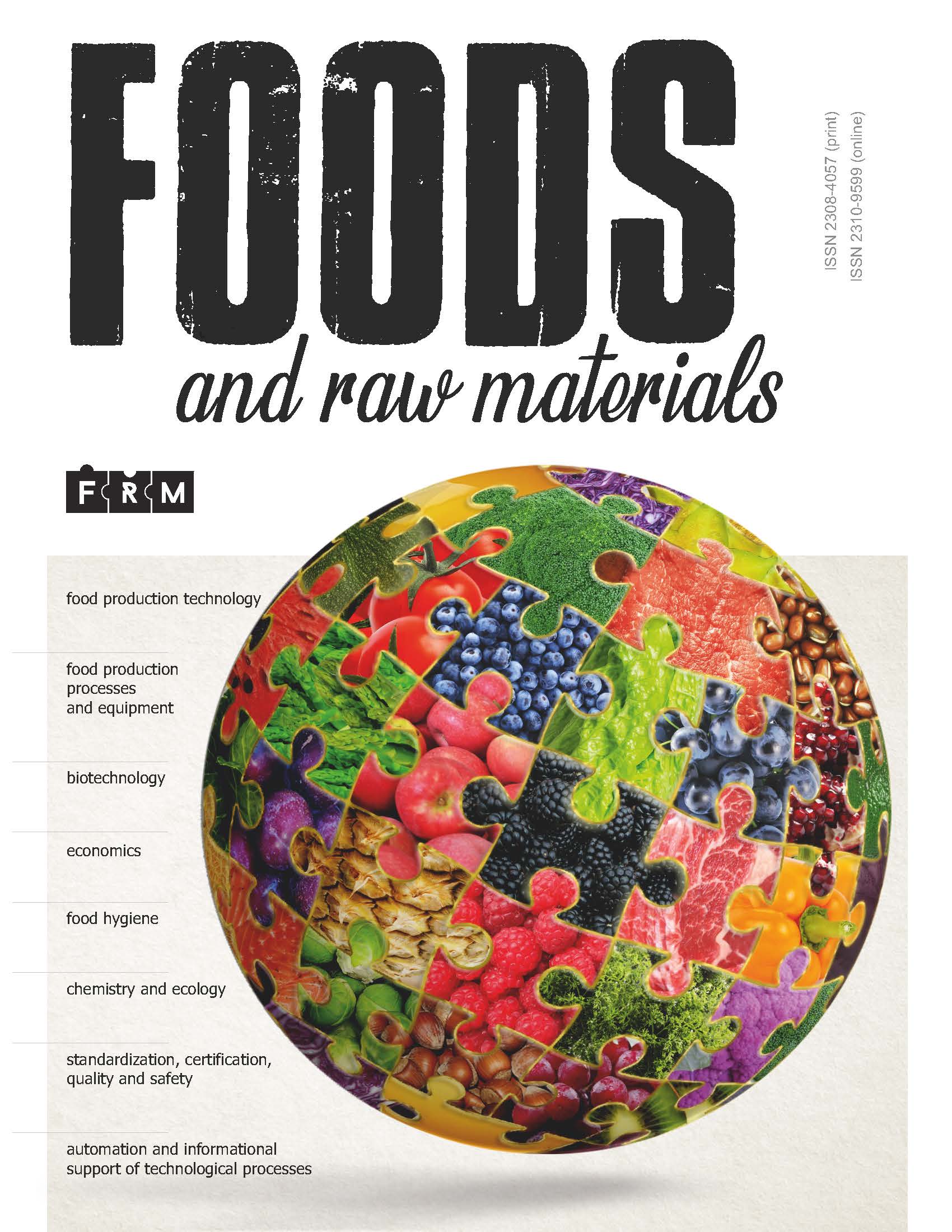The adsorption of gallic acid on active carbons of different ranks with different pore structure and chemical state of the surface is investigated. The regularities and features of the adsorption process are established. It is revealed that the adsorption isotherm of gallic acid from the aqueous solution with activated carbon of AG-OB-1 rank refers to the L-type isotherms by Giles’s classification, and AC adsorption isotherm of ABG and Purolat-Standard ranks – to the S-type isotherms. L-type isotherm gives evidence concerning the flow of physical adsorption. With S-type isotherm is the adsorption described, at which the strength of the interaction between the solute and the adsorbent is less than the force of interaction between the adsorbed molecules, which can be explained by the formation of hydrogen bonds. It was found that the maximum adsorption of gallic acid with carbon sorbents changes in the following sequence - "Purolat-standard" > ABG > AG-OV-1. The mechanism of adsorption of gallic acid on active carbons is offered. Proceeding from the structure, the chemical state and the main adsorption parameters of active carbon, we can assume that the adsorption of gallic acid has physical nature. It can take place in pores, both due to dispersion interaction (of van der Waals forces) and due to the interaction between the active carbon surface functional groups, containing oxygen with carboxyl and hydroxyl groups of gallic acid. The values of adsorptive capacity testify to the dependence of the adsorption efficiency on the structure and physical-chemical properties of the sorbent. It has been determined that by the absorption of gallic acid specific interaction makes greater contribution. It is shown that the results obtained can be applied to create adsorption technologies on removing gallic acid from the sewage containing individual components and from the mixture with other polyphenols, including beer wort.
Gallic acid, carbon sorbents, adsorption
INTRODUCTION
Gallic acid (3.4.5-trihydroxybenzoic acid) is one of the most common plant acids. As a part of the plant usually in a bound form (esters, polymers) it is a precursor to a number of polyphenolic substances [1].
This acid is contained in the sewage of pharmaceutical factories, it is present as a component in the beer wort. Gallic acid and its derivatives have a pronounced astringent taste. When being boiled together with hops, they contribute to the formation of trub, reducing the colloidal stability and the quality of beer.
It has all the properties of hydroxycarbon acids. The most reactive is OH group in the position 4 (Figure 1). Of the various reactions of gallic acid (oxidative coupling and esterification) there arise tannins. The tannins are divided into hydrolyzable tannins - carbohydrate and gallic acid esters (or its oligomers) and non-hydrolyzable condensed tannins.
Gallic acid forms oligomers of two types: with a carbon-carbon bond between the phenyl rings and with a complex ester linkage between the fragments. In this regard, gallic acids themselves are divided into non-hydrolyzable (diphenyl derivatives) and hydrolyzable (esters). Both these and those acids form hydrolyzable tannins with carbohydrates, because in an aqueous medium under conditions of enzymatic, alkaline or acid catalysis phenolic acids and carbohydrates are formed. These tannins are esters of monosaccharides with gallic or trigallic acids. Glucose esters with condensed gallic acid can be considered as tannins of dual nature, because they contain hydrolyzable fragments. These completely non-hydrolyzable tannins are derived from flavonols.
Under the influence of atmospheric oxygen tannins form stable black dyes. [1]
Dimerization and polymerization of coniferyl alcohol compounds help to form such derivatives of phenolic acid or, to be more exact, phenolic alcohol groups as lignans and lignins. Lignans are accumulated in all plant organs, they are present in dissolved form in resins and essential oils. Lignins in plants - important components of the cell wall of conducting and supporting tissues that act as tissue mechanical strengthening and cells protecting from biological, chemical and physical effects [1].
1. Plemenkov, V.V., Vvedenie v himiju prirodnyh soedinenij (Introduction to the chemistry of natural compounds), Kazan, 2001. 376 p.
2. Meledina, T.V., Syr´e i vspomogatel´nye materialy v pivovarenii (Stock and accessory materials in brewing), St. Petersburg: “Professija” Publ., 2003. 304 p.
3. Krasnova, T.A., Gora, N.V., and Golubeva, N.S., Issledovanie adsorbcii gallovoj kisloty na aktivnyh ugljah (Gallic acid adsorption on active carbons), Tehnika i tehnologija pishhevyh proizvodstv (Food Processing: Techniques and Technology), 2014, no.1, pp. 148-151.
4. Krasnova, T.A., Beljaeva, O.V., and Golubeva, N.S., Ochistka promyshlennyh stochnyh vod ot azotsoderzhashhih organicheskih soedinenij (Industriaal sewage treatment of nitrogen organic compounds), Kemerovo: KemIFST Publ., 2011. 146 p.
5. Chakchir, B. A. Alekseeva, G.M., Fotometricheskie metody analiza: Metodicheskie ukazanija (Photometric analysis technique: Instructions) St. Petersburg: Chem. Pharm. Acad. Publ., 2002. 44 p.
6. Tolmachev, A. M., Adsorbcija gazov, parov i rastvorov (Adsorption of gases, vapours and solutions), Moscow: Granica Group Publ., 2012. 240 p.
7. Adamson, Arthur W., and Gast, Alice P., Physical chemistry of surfaces, Canada, 1997. 804 p.
8. Riviere, J.C., and Myhra, S., Handbook of surface and interface analysis: methods for problem solving, New York. Marcel Wulluk. Inc. All Rights Reserved, 1998. 997 p.
9. Koganovskij, A.M. Klimenko, N.A., Levchenko, T.M., and Roda, I.G., Adsorbcija organicheskih veshhestv iz vody (Adsorption of organic matter from water), Leningrad: Himija, 1990. 256 p.










